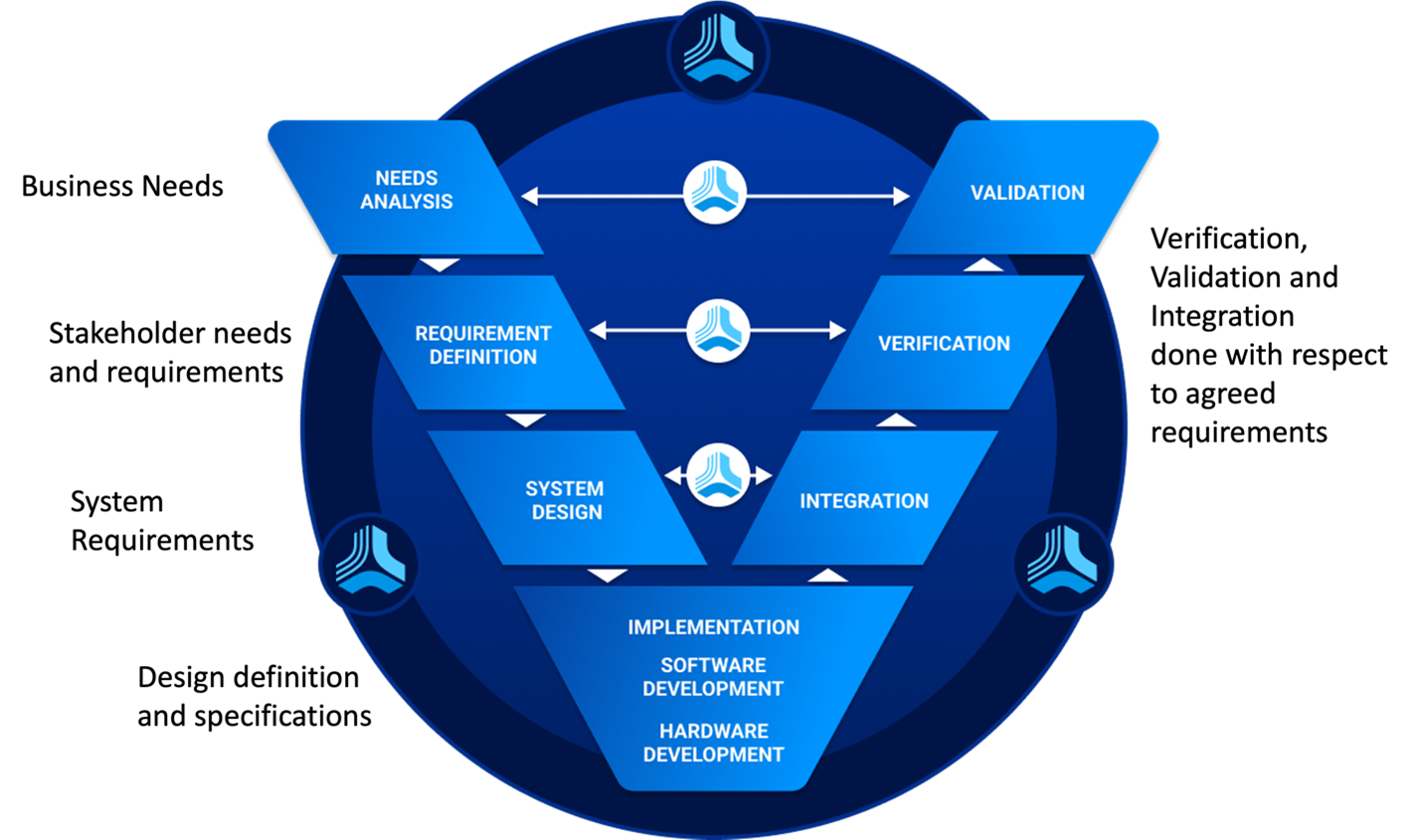
In this blog post, we share an article, titled “How to Use Requirements Management as an Anchor to Establish Live Traceability™ in Systems Engineering” – originally published by IEEE and authored by Nikhil Rai, IEEE Senior Member, Senior Director of Product and Solutions Marketing at Jama Software®.
How to Use Requirements Management as an Anchor to Establish Live Traceability in Systems Engineering
Complexity Necessitates Traceability
Today, when systems engineers develop complex systems and products, the concept of utilizing systems thinking principles is of the utmost importance. As per the INCOSE (International Council of Systems Engineering) Systems Engineering handbook, “a System is an integrated set of elements, subsystems, or assemblies that accomplish a defined purpose; these elements include products hardware, software, and firmware), processes, people, information, techniques, facilities, services, and other support.” Any new complex technology products invariably contain multiple sub-systems that interact with each other. The more complex a product is, the more complicated it becomes to effectively manage the delivery of those complex products. As such, the application of systems engineering becomes increasingly essential across almost every industry.
RELATED: The Jama Software® Data Model Diagnostic
Current State of Traceability Implementation
There is an inherent need — and concerted effort — in the product development industry to ensure that there is traceability across the design, software development, hardware development (including mechanical and electrical), integration, testing, and validation aspects of the product development lifecycle.
A previous article, Managing Complexity in Systems Engineering for Product Development with Live Traceability, mentioned the concept of Live Traceability™ and discussed why it is important in the development of complex systems. While Live Traceability may be essential to achieving faster time to market and higher product quality, implementing and managing traceability across product development has been approached in multiple ways.
According to Jama Software, digital thread in product development is defined as “a data-driven architecture that links together information generated from across the product lifecycle and is envisioned to be the primary or authoritative data and communication platform for a company’s products at any instance of time.” From a connected tool point of view, Jama Software ties together the digital thread across siloed engineering teams and tools to establish Live Traceability across the product development process.
Requirements as an Anchor to Live Traceability
If one were to look at requirements and specifications from the top level of a V or a waterfall model, requirements management is an overarching element of systems development. It is also the common thread connecting best-of-breed tools that are trying to establish traceability.
Using requirements as an anchor to manage change can give a direct view of how user needs and customer specifications are accurately tracked and brought to fruition. Developing requirements is not just a first step towards defining user needs and specifications, it also is vital for capturing business needs, system needs, design definition, and implementation specification— all of which affect the downstream stages of development to directly drive business outcomes. The top-level requirements and needs typically get further decomposed into requirements for system design, software, hardware, and processes. These are then eventually mapped to the testing, integration, and verification of the product to validate the outcomes with the primary requirements of the relevant stage of development. Any change that happens upstream or downstream usually warrants an analysis of change impact that can be tracked more efficiently by using a requirements point of view.
Hence, moving towards implementing traceability — as well as measuring the requirements traceability relationships from design, development, and testing —is imperative to establishing traceability for product development.
As the requirements are a common aspect across different product development stages, we can correlate relationship connections that connect top-level requirements to sub-system level requirements in order to form a traceability point of view. For example, when there is any change in a design requirement, it warrants an update in the software/hardware requirement downstream and, in some cases, even towards a component/manufacturing process change.
As per Guide to the Systems Engineering Body of Knowledge (SEBoK) from the International Council on Systems Engineering (INCOSE), each stage of the systems development process needs to account and refer to the requirements to align with the technical process.
RELATED: Jama Connect®: Accelerating Systems Development with Requirements Management and Live Traceability™
Measuring and Monitoring Requirements Traceability
Leveraging a platform that can effectively manage your requirements and create a model-based requirements approach that can integrate into all the downstream best-of-breed tools will help provide visibility and traceability across the product lifecycle. Measuring the traceability by calculating the level of relationships of top-level requirements, which are tied to downstream stages of product requirements, can help effectively measure the level of traceability information required for the product to be created efficiently. This directly impacts the cycle time and quality of product development. Ultimately, it makes the entire systems development process more efficient.
Author:
Nikhil Rai, IEEE Senior Member, Senior Director of Product and Solutions Marketing at Jama Software
https://www.linkedin.com/in/nikhilraimbajohnshopkins/
https://www.jamasoftware.com/solutions/requirements-traceability
Jama Software
135 SW Taylor Suite 200
Portland, Oregon, 97204
UNITED STATES
Tel: 971-930-1500
www.jamasoftware.com
References
Systems Engineering Body of Knowledge v2.7. INCOSE SEBOK.
Hefner, Rick. (2021, Jan 19). Systems Thinking: A Foundation for Product Development. Caltech.
Osofsky, Marc. What Is the Definition of Digital Thread. Jama Software.
Osofsky, Marc. (2022 January 7). Live Traceability. Jama Software.
Rai, Nikhil (2022 July 28). Managing Complexity in Systems Engineering for Product Development with Live Traceability. IEEE Innovation at Work.
